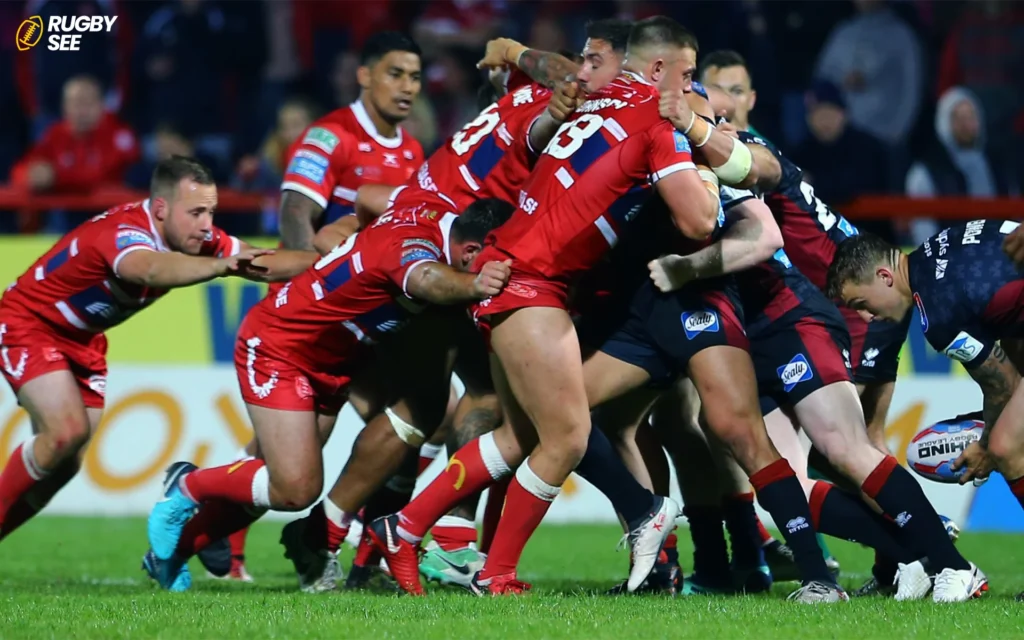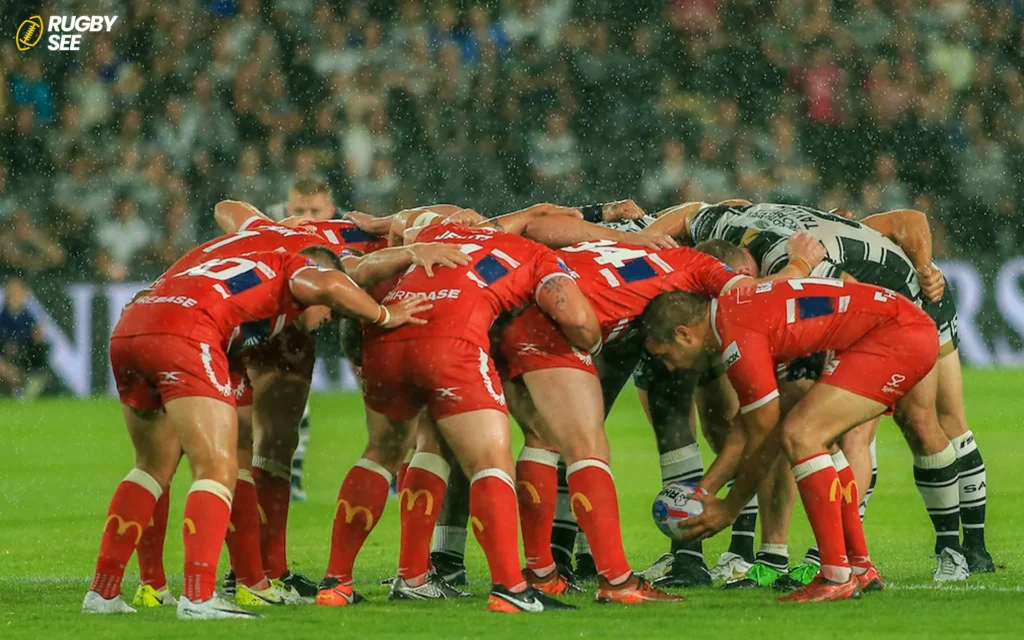For anyone looking to start playing rugby or improve their game, one of the most crucial decisions is choosing the right position. This guide will help you understand the different roles in rugby and how to determine which position suits you best.
Understanding Rugby Positions
Rugby, a sport known for its strategic depth and physicality, offers various positions that cater to different skills and physical attributes.
The Basics
- Rugby Union: Features 15 players per team, divided into forwards (1-8) and backs (9-15).
- Rugby League: Consists of 13 players, with similar division into forwards and backs.
Position Categories
- Forwards: Focus on strength and endurance.
- Backs: Require speed, agility, and tactical awareness.
Key Positions in Rugby
Each position has unique responsibilities and requires specific skills.
Forwards
- Props and Hooker (1, 2, 3): Involved in scrums, require strength and stability.
- Locks (4, 5): Tall players, key in lineouts and rucking.
- Flankers and Number 8 (6, 7, 8): Combine strength with mobility, crucial in breakdowns.
Backs
- Scrum-Half (9): Distributes the ball, a pivotal playmaker.
- Fly-Half (10): Key decision-maker, often directs the team’s attack.
- Centres (12, 13): Blend of speed and strength, break through defenses.
- Wingers and Fullback (11, 14, 15): Fast and agile, responsible for scoring and defending in wide areas.

Determining Your Position
Choosing the right position depends on your physical attributes, skills, and preferences.
Assessing Your Skills
- Strength and Size: Suited for forward positions.
- Speed and Agility: Indicative of a back’s role.
- Tactical Understanding: Important for positions like fly-half or scrum-half.
Physical and Mental Attributes
- Endurance: Essential for forwards.
- Strategic Thinking: Key for playmaking positions.
- Teamwork: Crucial in all positions, but the role varies by position.
Training for Your Position
Once you choose a position, specific training can enhance your performance.
Position-Specific Drills
- Forwards: Focus on scrummaging, lineout jumping, and mauling.
- Backs: Work on passing, kicking, and evasive running.
Fitness Training
- Strength Training: Vital for forwards.
- Cardiovascular Fitness: Important for backs, especially wingers and fullbacks.
The Role of Coaching
A good coach can guide you in choosing and mastering your position.
Feedback and Development
- Skill Assessment: Coaches evaluate your strengths and weaknesses.
- Game Understanding: Coaches provide strategic insights.
The History of Rugby Positions
Understanding the evolution of rugby positions helps in appreciating their current form and function.
Origins and Evolution
- Early Rugby: Initially, there were no fixed positions. Players often switched roles fluidly.
- Specialization: Over time, specific roles developed, leading to the current structured positions.
Historical Greats
- Profiles of Legendary Players: Examining past greats can provide insights into the development of various positions.
Insights from Professional Players
Interviews with professional rugby players offer valuable perspectives on playing different positions.
Learning from the Best
- Professional Advice: Tips from current and former professionals on playing specific positions.
- Training Regimens: Understanding the training routines of top players can be inspirational.
Overcoming Challenges
- Common Struggles: Each position has unique challenges. Learning how professionals overcome these can be enlightening.
Position-Specific Improvement Tips
To excel in your chosen position, consider these targeted tips.

For Forwards
- Building Core Strength: Essential for scrums and tackles.
- Improving Ball Handling: Even forwards need good ball skills.
For Backs
- Enhancing Speed: Critical for breaking through defenses.
- Developing Tactical Awareness: Understanding when to pass, kick, or run with the ball.
The Mental Game
The psychological aspect of rugby is as important as the physical.
Mental Toughness
- Resilience: Handling the physical and mental demands of the game.
- Focus: Maintaining concentration during high-pressure moments.
Strategic Thinking
- Game Sense: Anticipating opponents’ moves and making smart decisions.
Nurturing Your Rugby Career
For those aspiring to advance in rugby, certain steps are crucial.
Continuous Learning
- Skills Development: Always work on improving your skills.
- Feedback: Seek and heed feedback from coaches and peers.
Balancing Life and Rugby
- Time Management: Balancing training, matches, and other life commitments.
- Education and Career: Considering life beyond rugby.
Through this piece, you have been thoroughly introduced to ‘Choosing the Right Rugby Position for You’. Should you desire to view additional articles by rugbysee, you are encouraged to consult our news section.
Choosing the right position in rugby is a blend of understanding your physical and mental attributes, along with your skills and preferences. Whether you’re a forward with strength and endurance or a back with speed and agility, there’s a position for everyone in rugby. With the right training and guidance, you can find your fit and excel in this dynamic and rewarding sport.










